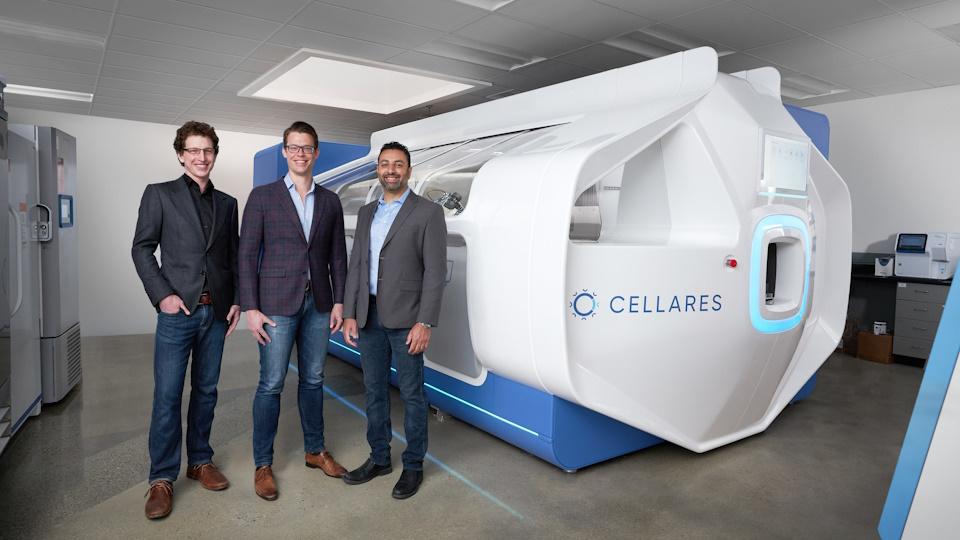Nine for 2019: Challenges impacting pharma

As we move close to 2019’s halfway point, it’s time to reflect on the issues that are shaping the pharmaceutical industry for this year and beyond.
The close of 2018 saw the number of approvals at a five-year high for both the FDA and the EMA. We’ve seen remarkable breakthroughs – in cancer, for rare diseases, and with next generation biotherapeutics such as gene therapies and cell therapies.
Despite this productivity, there are challenges accumulating for the pharmaceutical industry which will profoundly change the business model. 2019 has the harbingers of both the challenges and potential solutions.
In the first part of this two-part analysis, we look at two key challenges and two wildcards that will have profound effects on the industry for the coming year and beyond.
Challenge 1: pressures in the US impact global pharma
Before examining the potential impact of proposals to curb US prices and change rebating practice, it is worth reflecting on just how important the US is to the global pharmaceutical industry. The US market for prescription medicines, pre-rebates and discounts, now approaching half a trillion dollars, is the world’s largest by a factor of five, 45% of the world market by value. Forty years ago, the US market was 22% of what was then measured as a 'free world' market. Now, the US also contributes 65% of the sales value, pre-rebates and discounts, for innovative new launches in their growth phase[1].
US dominance will not change soon: the world’s second largest market, China, is less than one fifth of the value of the US market, and lags dramatically on contribution to the sales of innovative new substances, providing just 0.1% of their first five-year sales value.
Given these numbers, the US market matters for global pharma in a way no other country can match, and it matters even more for R&D based pharmaceutical companies with innovative products to launch. Any proposals which change the US paradigm, will change the future of the pharmaceutical industry.
The pricing and affordability of prescription medicines in the US is perhaps the only issue that generates political consensus – and the consensus is for substantive change. The Trump administration’s current proposals for Medicare Parts D and B may not be the final destination, but price, and margin, will be under pressure in the US, and IQVIA’s Market Prognosis forecasts that the growth of net prices will slow to between zero and 3% for the next five years.
Because the US is such a dominant share of the global market, there’s currently no substitute to make up for lack of US growth. Emerging markets simply do not support the sales of innovative new launches in any substantive way, and in any case their overall markets have seen declining growth rates. Other developed regions, mainly Europe and Japan, support the sales of new innovative medicines, but Japan and the top five European countries combined only support 23% of all innovative product early sales – little more than a third of the innovative value supported by the US alone.
Challenge 2: Pressure to decrease R&D costs
If the primary US engine of global value and profit growth performs less well, the pressure is on to manage pharmaceutical company costs better.
The two key cost areas for any innovative pharmaceutical company are research and development and sales and marketing. Regarding sales and marketing, cost reductions have been implemented, with significant reductions in salesforce headcounts and moves to lower cost via digital marketing – moves helped by the switch to selling specialty disease areas with fewer doctors, and the rise of digital channels of communication.
The pressure will now be on managing the costs of research and development more effectively than ever before. This tough task must be accomplished even as clinical development evolves, with pipelines focusing on developing specialty products in closely defined patient populations, regulatory change that encompasses earlier approval and greater flexibility on data, and the rise of digital technologies to support and expand clinical research.
Within specialty disease areas, patients are often hard to come by for trials. Synthetic trial arms allow trials to be conducted where it is not practical or ethical to have a traditional trial arm. Such novel trial designs can also save money and speed development. Regulators are becoming open to considering a broader range of data, and acceptance of real world data by more regulatory authorities will grow. There will also be greater adoption of virtual trial processes which can improve R&D efficiency.
Wildcard 1: M&A in 2019 starts with a bang
Last year was, apart from Takeda/Shire, a relatively quiet year for M&A, while 2019, in contrast, started with a bang.
Bristol-Myers Squibb announced a $74bn acquisition of Celgene on the 3 January. This is the largest pharmaceutical acquisition deal since 2000’s Pfizer/Warner Lambert deal, exceeding Pfizer’s more recent $68bn acquisition of Wyeth and Takeda’s $59bn acquisition of Shire. When finalised, it will push the combined company into the number two slot within the global oncology market, as defined by IQVIA MIDAS data. It might also set off a chain of M&A around the industry: by making this move, BMS has taken itself off the table as a potential acquisition and shaken up the competitive landscape of the world’s most valuable therapy area, oncology.
Reaction to this deal was widely anticipated – Lilly announced it plans to buy Loxo, an oncology company which has developed products in collaboration with Bayer, for $8bn, for example, and Roche intends to buy Spark Therapeutics. However, by the end of the first quarter of 2019, the volume of M&A deals announced was 10% lower compared to the corresponding quarter of 2018, according to IQVIA’s PharmaDeals service.
Deal values, on the other hand, remained on the rise. At $124bn, the aggregate total value of all M&A deals signed in the quarter was more than two-fold higher than the $59bn spent in Q1 2018, accompanied by a 165% increase in the mean total deal value for these deals from $1.2bn in Q1 2018 to $3.3bn in Q1 2019. Albeit skewed by the BMS/Celgene deal, this increase reflects the competitive landscape in which big pharma companies are making fewer but higher value deals to bolster their pipelines amid a shrinking pool of promising assets.
Wildcard 2: Brexit
Finally, no review of 2019 would be complete without acknowledging the UK’s planned exit from the European Union, serially delayed though it has been. Brexit, especially if it is a 'no deal' Brexit, will have implications for the UK and for the EU across all aspects of citizen’s lives and economic activity, and for the pharmaceutical and healthcare industries, with their highly international nature and EU level regulation, the impact will be significant.
Pharma has prepared extensively for a no deal scenario – hopefully unnecessarily. Predicting Brexit outcomes is a high-risk game, but the balance of political will, for both Europe and the UK, appears to be to avoid no deal if possible. Even with a deal, the future role of the UK as a globally important pharmaceutical market will be open to change. Currently, the UK is typically third in line for new innovative launches, a hugely important centre for the global pharmaceutical industry in terms of research and development activity, genomic and real-world data activities, and the home of many global and regional headquarters.
In preparation for Brexit, the UK government has, positively, developed a renewed commitment to promoting British life sciences via the development of the Industrial Life Sciences Strategy commitments. This year will see the start of the UK’s evolution to a different role in the global pharma market.
Opportunities
But it’s not all doom-and-gloom. In the next Nine for 2019 article, we’ll be looking at the many opportunities opening up for the pharma industry, including new directions for the Chinese market and the rapid evolution of digital tech in clinical trials.
About the Author
 Sarah Rickwood has 26 years’ experience as a consultant to the pharmaceutical industry, having worked in Accenture’s pharmaceutical strategy practice prior to joining IQVIA. She has wide experience of international pharmaceutical industry issues, having worked most of the world’s leading pharmaceutical companies on issues in the US, Europe, Japan and leading emerging markets, and is now vice president, European thought leadership at IQVIA, a team she has run for eight years.
Sarah Rickwood has 26 years’ experience as a consultant to the pharmaceutical industry, having worked in Accenture’s pharmaceutical strategy practice prior to joining IQVIA. She has wide experience of international pharmaceutical industry issues, having worked most of the world’s leading pharmaceutical companies on issues in the US, Europe, Japan and leading emerging markets, and is now vice president, European thought leadership at IQVIA, a team she has run for eight years.
[1] IQVIA European Thought Leadership MIDAS MAT Q4 2018, based on Innovative Branded New Active Substances globally launched between 2010-2017, ex-manufacturer level, pre-rebates and discounts












